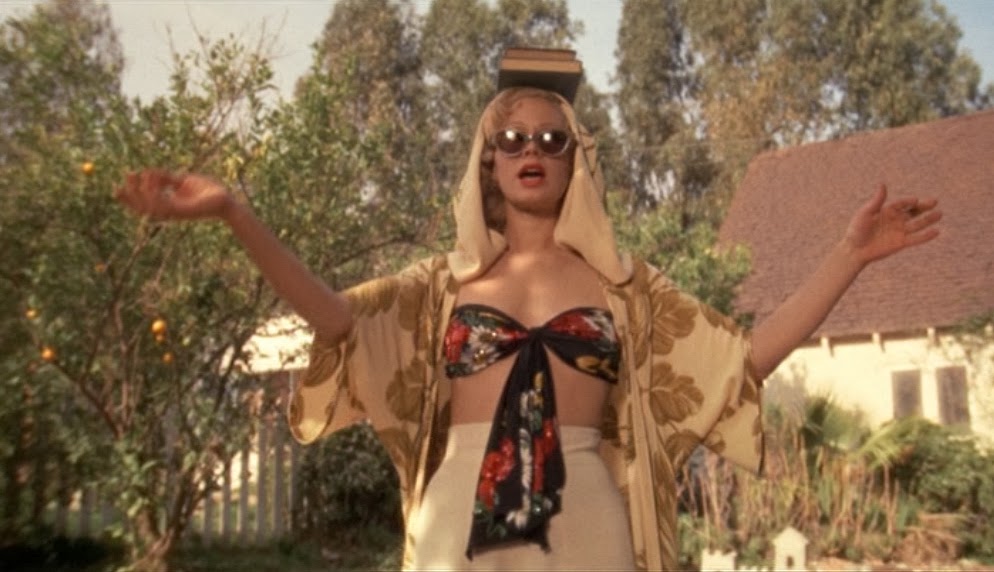 |
| Noise, Drone, and Bass, availed from Ephemera by Unsound |
"Perhaps our sense of this, the sense of belonging to a world held together by networks of ephemeral confidences (such as philosophies and stock markets) rather than permanent certainties, predisposes us to embrace the pleasures of our most primitive and unlangued sense. Being mystified doesn't frighten us as much as it used to. And the point for me is not to expect perfumery to take its place in some nice, reliable, rational world order, but to expect everything else to become like perfume." Brian EnoWhat makes this project so incredible is that not only are these scents completely wearable as perfumes, but they were originally launched as a synesthetic art installation. Each scent is based off of a sound piece by an influential musician within the genre that each perfume is named for. The installation, which unites the scents, visuals, and music into one experience, first debuted at the Audio Visual Arts gallery during Unsound Festival New York. The launch of the bottled perfumes coincides with a five-room installation at the National Museum of Krakow. If you cannot visit these installations live, the music videos are available to watch in tangent with the perfumes via Ephemera's site. Naturally, I rushed to sample these, and quickly received a package covered in adorable stamps from Ephemera's headquarters in Krakow, Poland. Inside was a beautifully designed letter carefully instructing me on how to experience these scents together with their musical and visual counterparts.
Bass is composed for Steve Goodman (aka Kode9), whose describes his inspiration for the sounds:
"My piece ‘Vacuum Burn’ is based on the earliest sound/smell overlap that I can remember as a child. We had a dysfunctional vacuum cleaner that gave off a scent of burning dust, so whenever I hear the sound of hoover basslines, or those kind of crackling low frequency, fog-horn type bass drones, then I always get this burning smell which is not actually present, but rather is a virtual byproduct of this memory in which the smell and sound have become cross-associated."Schoen translated this memory to a bold, sexy scent which "opens with woodsmoke and rum notes, developing into leather, mastic, and tea notes, and finishing with castoreum and moss." It has a gothic feel reminiscent of a Black Phoenix Alchemy Lab oil, but a little cleaner, like the machine generated music it describes. Of the three unisex scents, this one leans the most masculine and has, as Nero Profumo describes, "a remarkable human factor... something about its warmness, its animalic facets, its ability to feel alive." The sounds for Bass, with accompanying visuals from MFO, can be seen here, and reflect the gritty, burning, warm, complex scent.
Drone, though definitely unisex, is perhaps the most feminine of the trio. It is light and airy, but there is something unusually undermining about it. It was made for Tim Hecker, who describes the tonal inspiration as:
"A speculative day-glow incense from rituals where long-form sound induces levitation. The smell of music that has somehow gone on too long, but no one cares. The confusion around odours possibly coming from an unwashed composer or a fully-washed cleric bathed in smoke."
It speaks to Schoen's artistry that this is exactly what I feel in Drone. Aldehydes and air notes create the sense of levitation, developing to fir and juniper, with a base of patchouli, ambergris, and vetiver that subverts the composition. Ambergris has a lift to it that complements the initial notes of aldehydes and air, keeping the scent in a playback loop. The sounds for Drone, with accompanying visuals from MFO, can be seen here, and are especially dreamy.
Noise, the last of the trio, is the most abstract, androgynous, and of course, my personal favorite. It is beautifully chaotic, described as a mix of "aldehydes, ozone, black pepper, saffron, and labdanum" that seem to bounce around the composition. It was made for Ben Frost, whose inspiration for the sounds comes from a childhood memory of Ash Wednesday:
"Ash Wednesday: The creeping haze of burning trees, distant crackling, the muffled roar and siren, suffocating wind, heat and the physical noise - the looming spectre of Australian bushfire. We wear wool. Sheep don’t easily burn, you see.
My Grandfathers workshop: Soldering, electrical burns- the cycling whine of angle grinders and the showering sparks of an arc welder. The rust, the damp, the wood, the sweat.
Church on Sundays: Crackling radio-mic sermon, always cold, bluestone, frost, and frankincense.
The back of the hunting truck: moisture and insect drones, mould and gunpowder, empty shells and diesel in jerry cans.
The buzz of flies over sticky blood."
It's reminiscent of a CB I Hate Perfume scent, perhaps Burning Leaves. It's strange, smoky, cool, complicated, and I just love it. The sounds for Noise, with accompanying visuals from MFO, can be seen here and are wonderfully dark and industrial.
When Ephemera asked, "What kind of sounds would you like to smell in 2015?", I responded with, "the sound of a comet." Now that would be a synesthetic challenge! I can't wait to see what this fantastic company comes up with next, and look forward to future creations that blur the boundaries between perfume and fine art.
 |
| My response: "the sound of a comet" https://soundcloud.com/esaops/a-singing-comet |





















